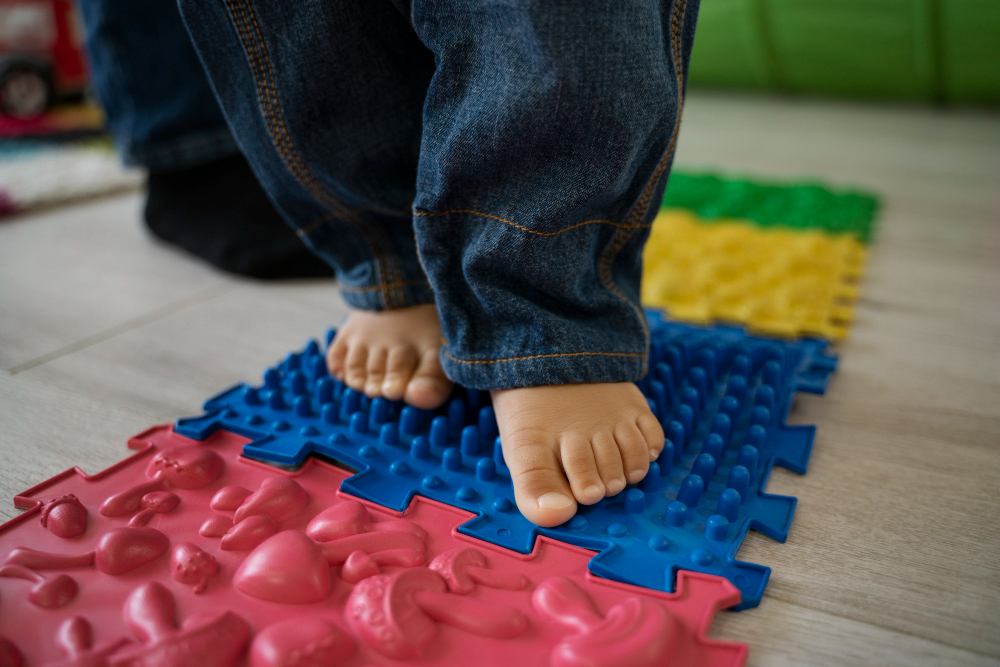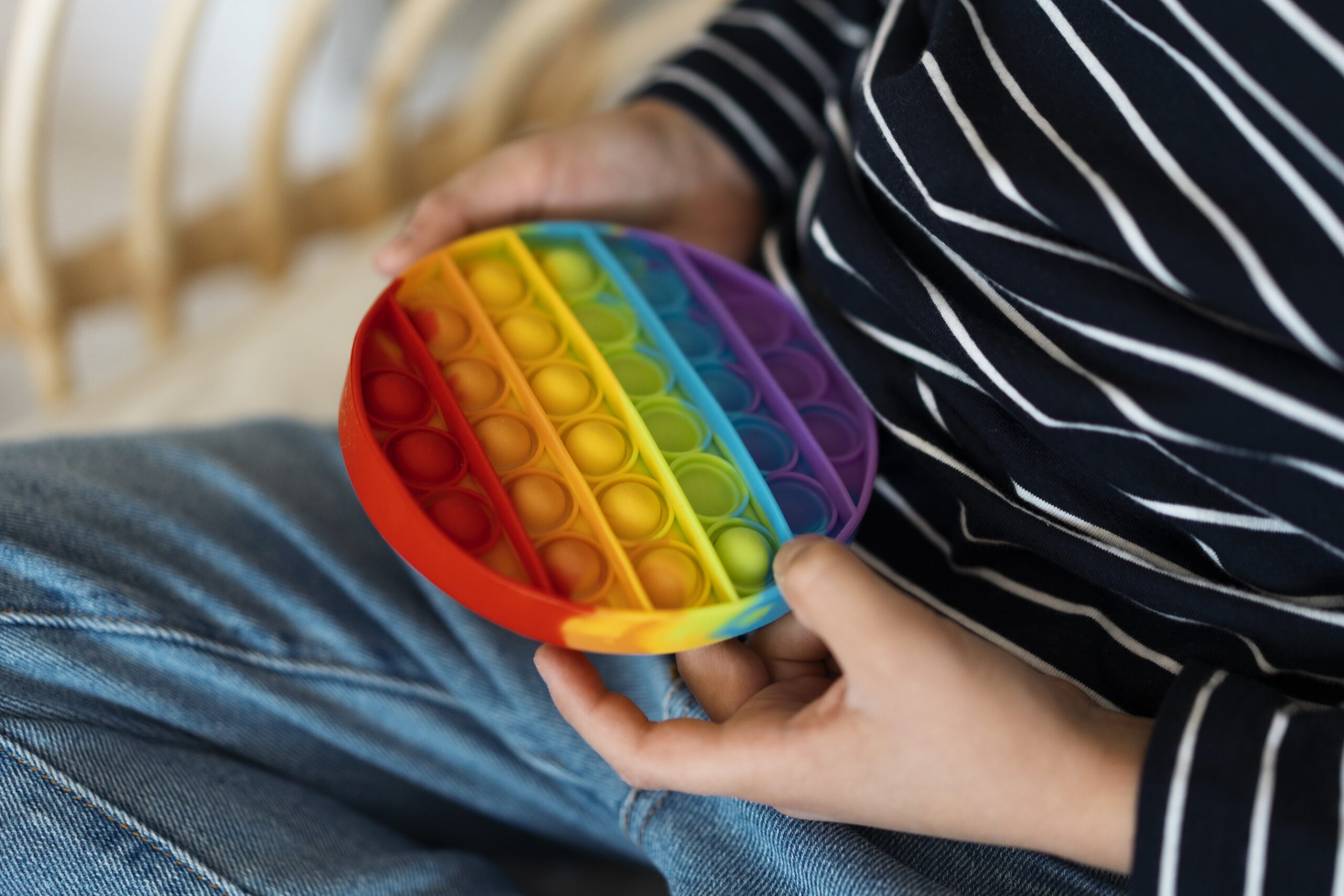The absolute highlight of my brief stint of Headship was creating a sensory room called ‘The SparkleBox’. It had always been a passion of mine to look at how different children needed extra support or resources to help them and to create a specific multi-sensory room in a very small school, was a priority for children who needed nurture and positive play.
This blog will unpick strategies that you can incorporate into your classrooms, even if you can’t create a specific room for it.
With such an increase in neurodivergent learners and an increase in special needs within mainstream classes, it is even more vital that we have a range of strategies in our toolkit to cater for these children. No size fits all and without some specific interventions, these children will never have the opportunity to achieve in the same way as neurotypical pupils.

The sense of Touch:
Watching my fluffy new puppy sat rolling round on a furry mat in front of the fire, rather than on a hard wood floor, it leads me onto thinking how much we are all subject to our senses.
Who loves to wear their slippers as soon as they get through the door?
Who has a cosy duvet or blanket to curl under when you are feeling under the weather?
Who has a favourite jumper or cardigan you revert to when needing that extra bit of security?
Why? Because it makes us feel safe and wrapped up in softness – particularly at times when life can feel harsh and far from cosy.
We all have this need but for some children, it is heightened due to ADHD, Autism or other factors. I have taught pupils where the uniform code had to be relaxed, allowing them to wear a comfy hoodie or onesie, in order for them to attend school and then be comfortable enough to engage. I have worked with pupils whose stress levels will be highly elevated by wearing tights which aren’t in line or who find all in one swimming costumes incredibly uncomfortable. I get it! I am mocked for not wearing socks, unless I absolutely need to as I like my feet to feel free and feeling too hot leads to mild panic!
The rise of weighted blankets in alleviating anxiety has been significant in recent years and whilst I firmly believe they have their place, there is an irony in how weighing us down can make us feel lighter!
The incorporation of tactile activities is commonplace in EYFS and SEND settings but more and more, I have had to create opportunites for mainstream pupils to explore their need to touch in order for them to concentrate. A box of fidget toys was available for pupils to access, but as a teacher we need to determine when pupils are simply wanting to ‘play with toys’ or actually need these to enable them to focus.
In recent years, I was part of an initiative to introduce peer massage into our classes. In the main, this proved very popular and children used it as another tool to manange their emotions and initiate calm. It is important that consent is sought from parents and the children themselves and if children wish to opt out, they shouldn’t be forced to do this. It is definitely something to consider as part of a mentally healthy school ethos.


The sense of sight:
“Young children spend a lot of time — usually the whole day — in the same classroom, and we have shown that a classroom’s visual environment can affect how much children learn,” Anna V Fisher.
The use of colour with children is something which has been heavily researched. For some children they are stimulated by bright colours, babies are reputed to respond to black and white better and some schools advocate only neutral colour schemes of natural colouring and hessian. Research from the likes of Fisher shows that children can reach sensory overload by too many dangling objects, rainbow coloured furniture and displays crammed full. Many educators feel that visually noisy displays detract from the children’s work and can be overstimulating for neurodiverse pupils. Personally, I have created many brightly coloured displays and will never know if some pupils would have reacted better if these were on hessian backgrounds. However, I am a firm advocate for allowing children to sit in different postitions, even in the reading corner, if it helps them concentrate. I have had pupils opt for facing a wall so as to not be distracted and pupils who have thrived sitting at their own personal workstation.
When creating the ‘Sparklebox’ we actively sought out sparkling lights, light tubes, and many more bright resources, but for nurture and positive play, it is quite different to sitting in a Maths lesson.
Whatever you choose visually, consider the pupils within the class and what works for one may not work for all.
The sense of sound:
Now more than ever, ear defenders are quite commonplace in mainstream classrooms. They can be particularly useful in unusual settings, such as on school trips or in the theatre. ‘Beyond Autism’ has conducted research into how these should be used and this needs to be managed according to the pupil’s particular needs. It is not recommended that they are used too much, as it can lead to isolation and desensitizing the child. But they should also be readily available so the child can be encouraged to select them when they feel their stress levels rising.
The use of music in the primary classroom is again an interesting topic. I used to play Mozart during Maths lessons occasionally and actively told the class that it would improve their maths brains! They believed me – honest! Whilst research into this is non-conclusive, there is much evidence that classical music can be calming and emotion evoking. I would regularly play calming music as the children entered the classroom and if nothing else, it set a tone and expecatation for the day.
The sense of Taste:
Many neurodiverse pupils can find eating and meal times a challenge. Due to their sensory needs, they can appear ‘fussy’ or not eating can lead to confrontation or increased anxiety. This needs to be managed very carefully, working alongside parents to make reasonable adjustments if needed. Equally, some children may need additional snack breaks as they can start to waiver in their concentration if they are hungry. This can be mananged sensitively so that other children don’t see that as unfair. None of us can concentrate when we have rumbling tummies and there are many cases where children benefit immensely from breakfast clubs so that the day starts positively and without them being distracted by hunger.
OTHER STRATEGIES TO CONSIDER:
Brain Breaks: Allowing children to seek a break from the desk when they start to fidget and get distracted. This can be a physical break, such as a run around the playground, or a calming break where they have a settling activity for a while, before returning to their work. This needs to be timetabled, part of the child’s personalised plan and not just adhoc, in order for it to be effective.
Visual Timetables: Many pupils prefer to know what is ahead of them and I have found that every class prefers to see the timetable for the day, so they can mentally prepare for the activities ahead. But certain children will really benefit from their own timetable with images in front of them, which may need talking through with them at the start of each day. This can again be highly effective in terms of alleviating anxiety and making sure pupils are not caught ‘off guard’.
Blog written by Jo Gotheridge 30 .10.25

0 Comments